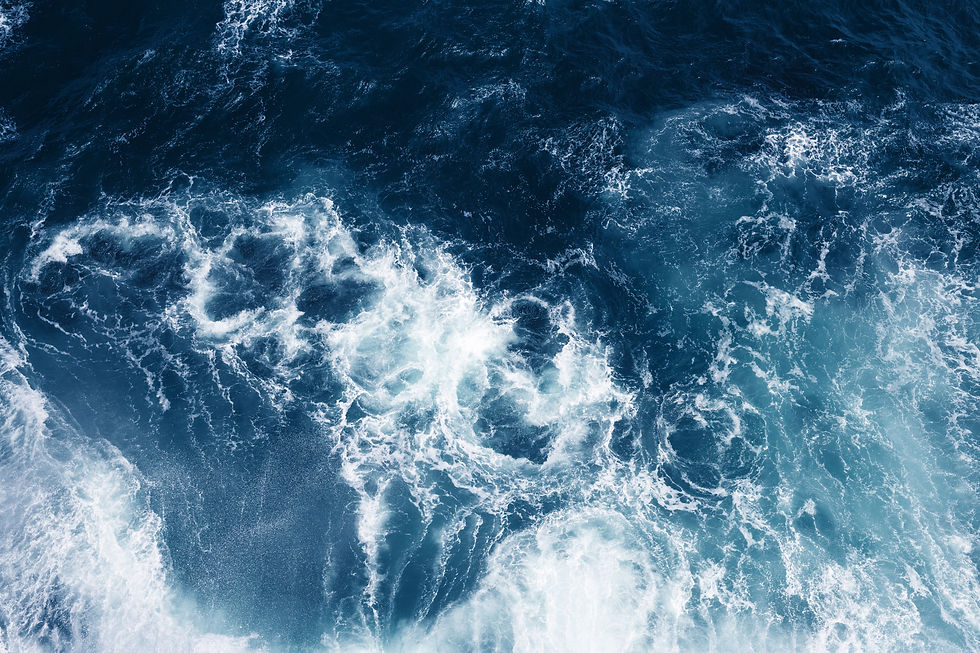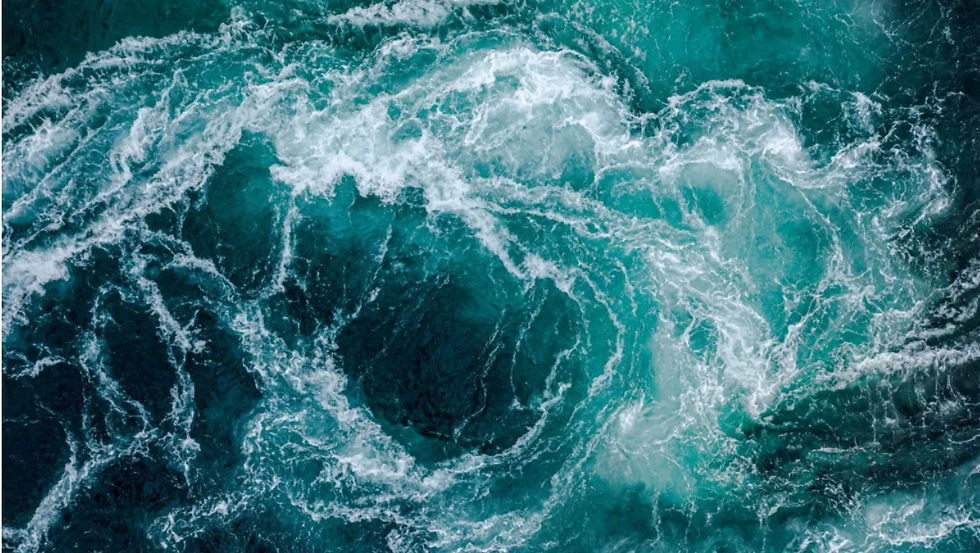EXPLORING OCEAN GEOGRAPHY: AN INTRODUCTION TO OCEAN CURRENTS
- innovatewithstem12
- Dec 30, 2024
- 2 min read
Updated: Feb 15
Published on: December 30th 2024

An Introduction to Ocean Geography:
Ocean geography is one of the most important systems on Earth. Its contributions range from being a habitat for many organisms and ecosystems to having a strenuous effect on weather patterns and even natural disasters.
One of the most intriguing aspects of ocean geography is ocean currents. Ocean currents are responsible for the vast quantities of water streams flowing through the oceans across the globe. If you can imagine it, Ocean currents are the conveyor belts that work to move water in both horizontal and vertical directions. The horizontal movements of water are usually classified as ocean currents, while the vertical movements of water are known as upwellings or downwellings. These movements around the ocean are known for transporting nutrients and heating and cooling the different oceans. Understanding ocean currents is key to understanding the ocean itself and how it functions as well as provides for all living and nonliving things on Earth (including us).

How Ocean Currents are Formed:
Many different factors play into how ocean currents can be formed. One example is wind patterns, the ocean's surface currents can be formed, shaped, and predicted by wind patterns. Wind pushes the water in the direction that the wind is blowing toward creating the surface current. Another factor that affects ocean currents is the Coriolis Effect which is the earth's rotation that causes currents to deflect from the surface currents created by wind patterns and forcibly curving the currents to the right in the Northern Hemisphere and left in the Southern Hemisphere. Other factors are the temperature and salinity of the water. In polar regions, the water is colder and flows towards the equator causing other area’s warmer water to rise. The last main factor is tides. Tidal forces usually caused by the gravitational pull of the Sun and Moon, create smaller currents near coastlines.
Significance of Ocean Currents:
Ocean currents play an essential role in how Earth regulates its climate. Ocean currents redistribute heat towards colder regions and moderate temperatures, especially in North America and Europe. This heat transfer is vital to stabilizing global weather patterns and creating, shaping, and determining seasonal weather conditions across the globe.
By understanding ocean currents, we can learn about how the Earth provides its nutrients, creates and sustains weather patterns, determines seasonal climate patterns, and redistributes heat - ultimately creating a stronger pushback against the rapid effects of global warming and climate change.
Sources:
National Geographic. “Ocean Currents | National Geographic Society.” Education.nationalgeographic.org, 19 Oct. 2023, education.nationalgeographic.org/resource/ocean-currents/.
---. “Ocean Currents and Climate.” Education.nationalgeographic.org, 19 Oct. 2023, education.nationalgeographic.org/resource/ocean-currents-and-climate/.
NOAA. “How Does the Ocean Affect Climate and Weather on Land?” Noaa.gov, 2024, oceanexplorer.noaa.gov/facts/climate.html.
“The Major Ocean Currents of the World - Earth How.” Earth How, 15 Feb. 2017, earthhow.com/ocean-currents/.
US. “What Causes Ocean Currents?” Noaa.gov, 2018, oceanexplorer.noaa.gov/facts/currents.html.





Kommentare